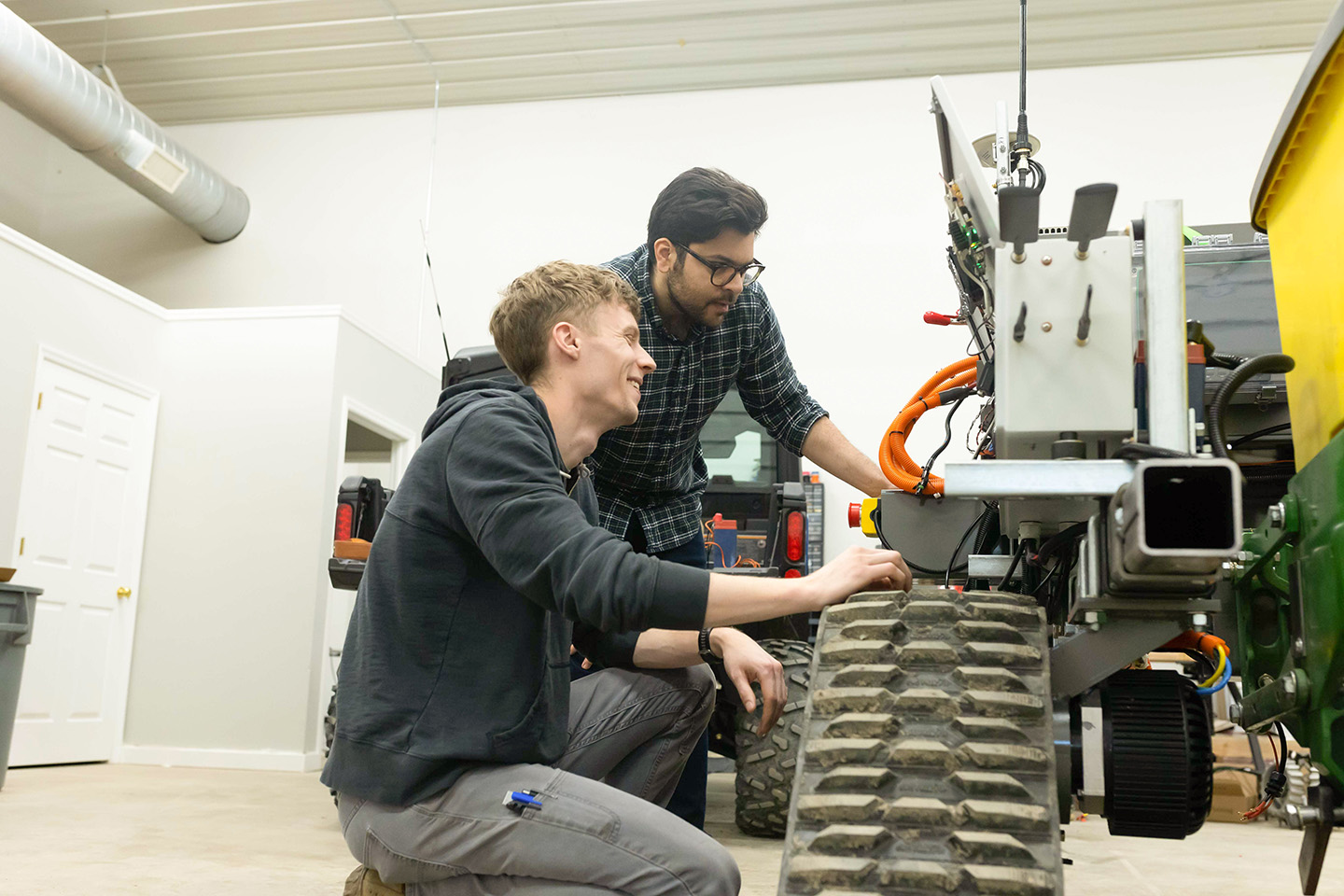
(Photo: Joclyn Bushman/Iowa Soybean Association)
Ames-based company is developing an autonomous planter
May 26, 2022 | Kriss Nelson
A multigenerational farm in Boone County will be a part of change during this year’s planting season. David Krog is using 40 acres of his wife’s family farm to test his autonomous planter.
“This field used to be planted with a team of horses, then tractors arrived, and it has been planted using tractors ever since,” Krog says. “But this year, we will plant the field, once again, without a tractor. It’s a start of a new era.”
Dream to reality
After a decade of considerations and imagination, Krog, CEO of Salin 247 in Ames, is bringing what could have remained a vision to existence.
He recruited the assistance of Saeed Arabi, software lead; his son Ben Krog, mechanical engineering lead; and other contractors and advisors to develop a platform for small, lightweight, electric-powered autonomous crop production machines.
In 2021, Salin 247 tested the prototype of an autonomous planter. Through trial and error and farmer and industry feedback, the company made changes. Now, Salin 247, co-founded by David Krog and Arabi, is ready to hit the ground “planting” again this year.
“Salin 247 is centered around a platform that features a drive unit, or a chassis, which includes tracks, a toolbar, batteries, computers and GPS,” says Krog.
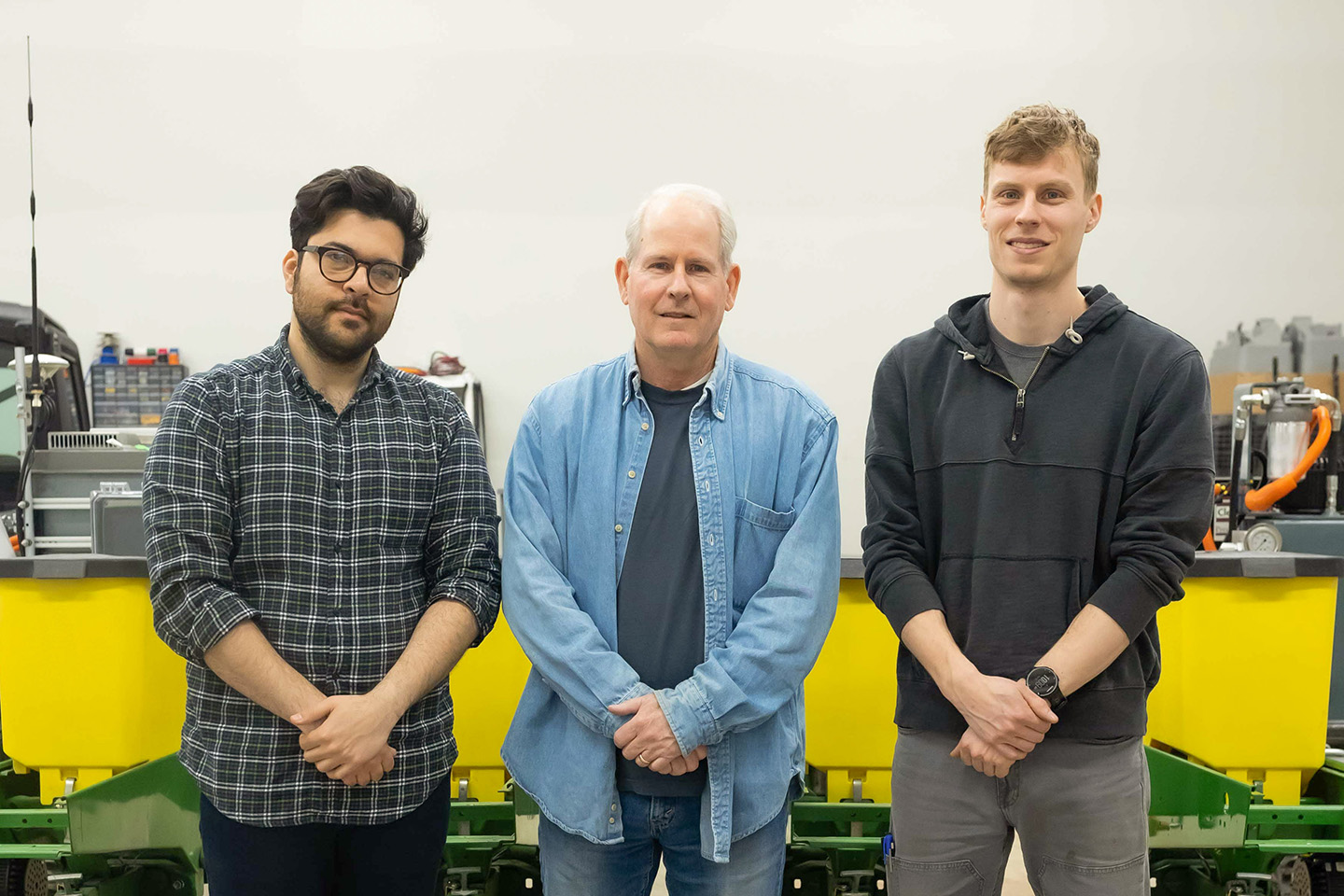
Though fairly new to the planting scene in Iowa, Krog says Salin 247 uses products familiar to the farmer.
“It features products by well-known companies like Precision Planting and Ag Leader,” Krog says. “We’re not trying to reinvent the wheel. We are utilizing what is already available.”
The platform will be able to be transformed for other jobs in the field, including spraying and liquid fertilizer applications.
“The idea is to take off the planter and attach a boom with a tank,” says Krog. “In doing so, you have an autonomous liquid system.”
Plans are in the works to develop a docking station where the autonomous machines will return to refill with seed, chemicals and fertilizer. Because the unit is electric-powered, this could also be the opportunity to swap out the batteries in the future.
“The docking station would be autonomous and mobile across the field,” says Krog.
Reducing compaction
The concept behind Salin 247 is to help address issues with soil compaction by replacing larger farm equipment.
As tractors have evolved over the years, they have gotten bigger and heavier, notes Krog.
“I love tractors, but the best way we can address soil compaction is to get the heavy equipment off the field,” Krog says. “That is what we are trying to do. Our approach is to use technology and focus on lightweight equipment.”
Although autonomous technology isn’t new technology, Salin 247 is helping to bring it to the forefront for crop production, says Dave Walton, treasurer for the Iowa Soybean Association’s (ISA) board of directors and farmer from Wilton.
“Where it has been conceptual in the past, it’s now in practical application mode,” Walton says. “If we could couple it with sensors to apply pesticides only when and where needed, it would be a win-win for ag.”
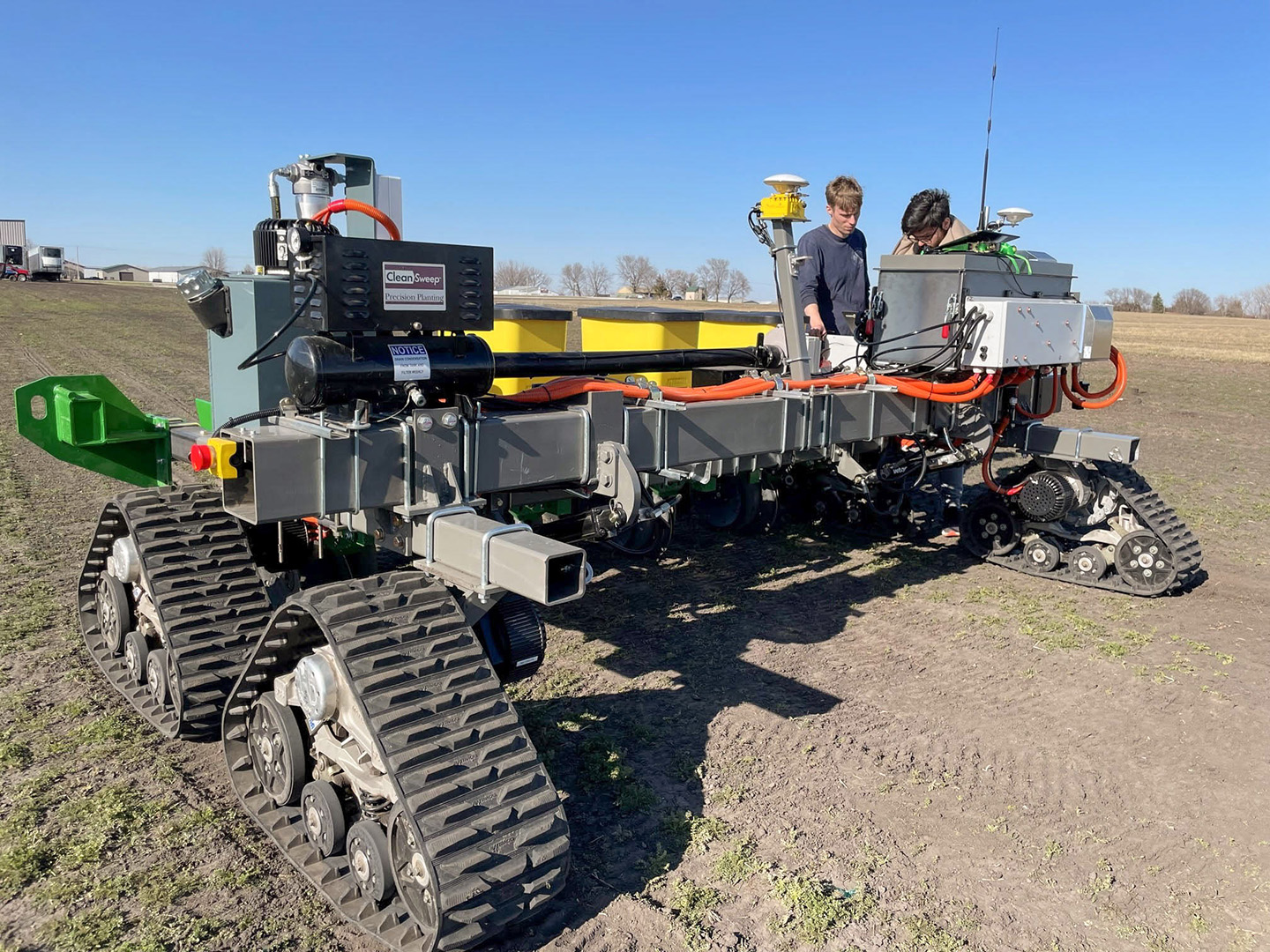
Additional benefits
Related to reducing soil compaction is the benefit of efficiency.
“There is the ability to get into the field before some heavier equipment,” says Krog. “Feedback from farmers indicates they like the idea of getting into the field sooner after a rain.”
Getting in fields sooner could be especially advantageous in post-emergence spraying and side-dressing nitrogen applications.
Autonomous planters could allow for burning the midnight oil.
“It’s in our name, ‘Salin 247,’” says Krog. “You could run 24 hours a day. Farmers can drive all night too, but it is easier with an autonomous approach.”
Krog estimates a 25% to 35% savings with the autonomous approach in fixed costs vs. current machinery needed to perform those tasks.
“The technology has lower operational costs and uses significantly less energy with electric power,” Krog says. “Maintenance and repairs on electric motors also typically cost less.”
Although labor wasn’t the initial focus for creating Salin 247, Krog says he is learning autonomous equipment could be the answer to labor-shortage issues in agriculture through farmer and industry feedback.
“I don’t think there has been a farmer we talked to where labor has not come up,” Krog says.
This is especially true on farms planting large acres and in custom application scenarios, he says.
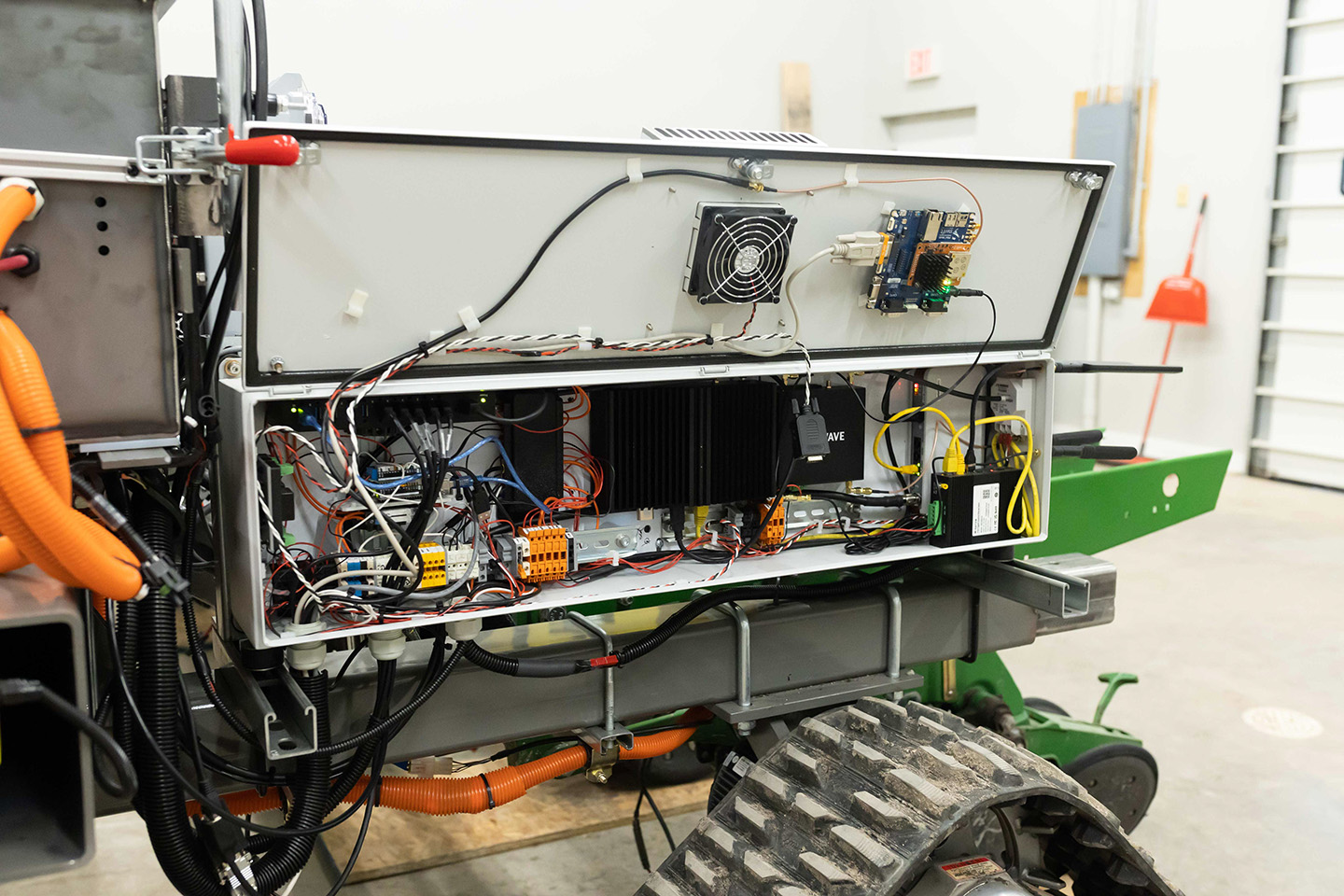
Investing in the future
Continuing a long tradition of keeping Iowa soybean farmers at the forefront of technology, ISA has invested in the on-farm research aspects of Salin 247.
“We like to help farmers evaluate new tools and technologies that are potentially the way of the future to see if they will bring value,” says Ed Anderson, senior director of research at ISA.
Anderson is encouraging Krog and his team to work with ISA’s network of farmers and the Research Center for Farming Innovation field services team to evaluate Salin 247.
“Funding projects like this is just one more example of how ISA’s staff and directors are driven to deliver positive results and bring value to soybean producers in the future,” says Walton.
Anderson is eager to play a role in connecting farmers and Salin 247 to test this technology.
“We are excited to be getting into this area of continuous change and improvement in agri-technologies and supporting companies working on field evaluation of new automated equipment,” says Anderson.
Krog is convinced autonomy will be an essential part of the future of crop production. As he continues to develop Salin 247, he will rely on farmer feedback. “It’s not for us to decide,” he says. “Farmers will decide if autonomy is the future.”
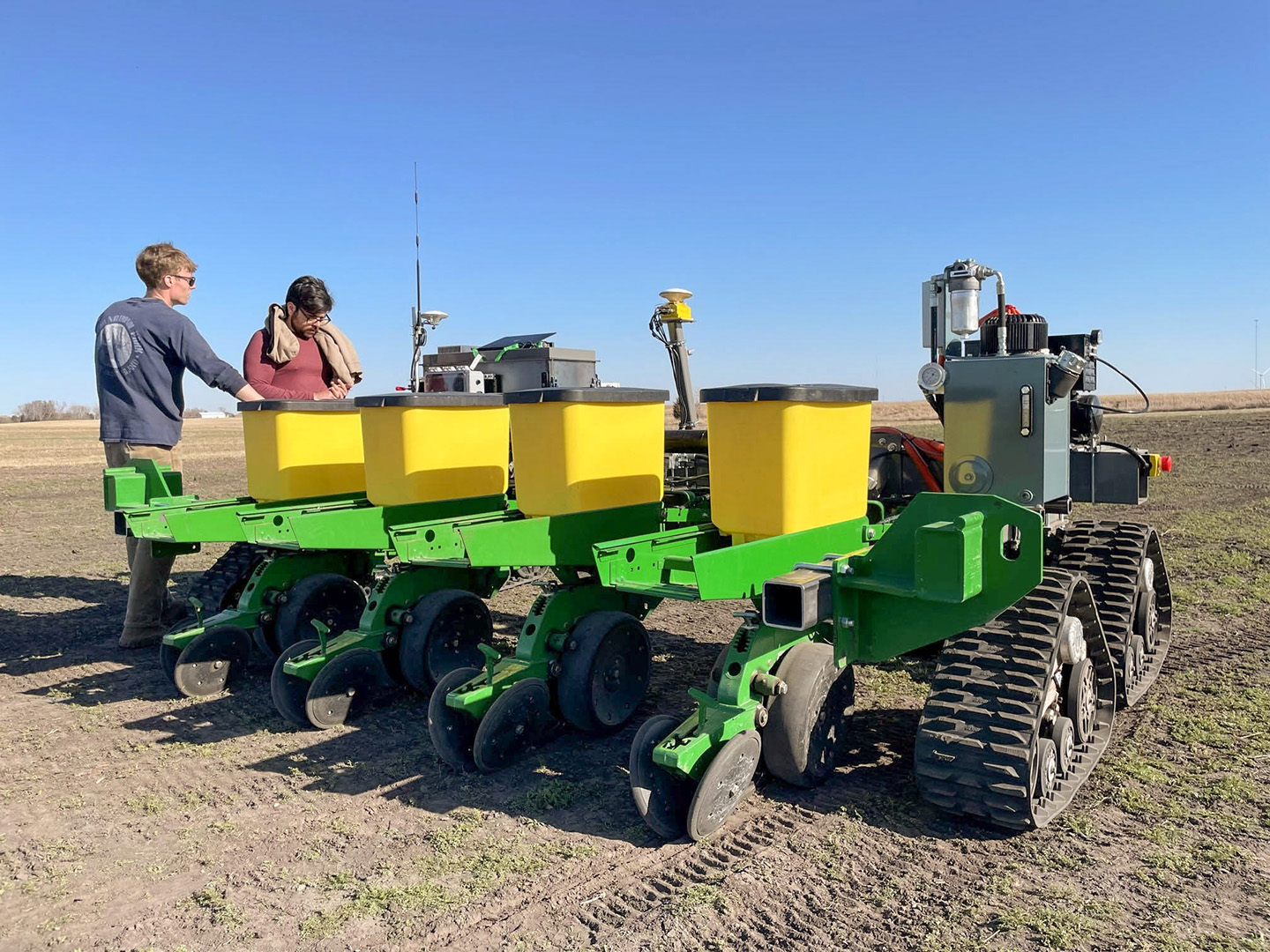
Technology Timeline
2022: 10 soybean and corn farms in Iowa and Tennessee are participating in a planting and proof of concept with the spraying system in select fields. Proof of concept on side dressing N on corn with Y-drops slated for summer 2022.
2023: After a successful 2022 season, moving onto 100-plus farms through paid pilot projects.
2024 and beyond: Scaling up for broad commercialization rollout to farmers and custom operators.
Back